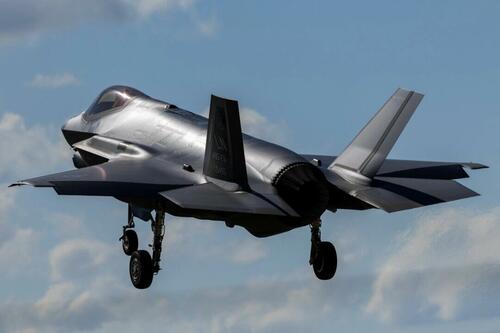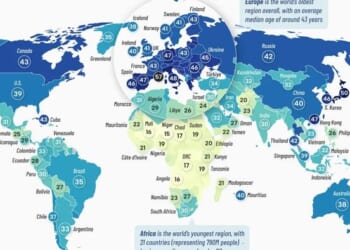Authored by Mike Fredenburg via The Epoch Times (emphasis ours),
Commentary
There is little doubt that China’s recent announcements on quantum radar and artificial intelligence (AI)-powered submarine detection, which collectively rip away the operational advantages of submarines and stealth aircraft, are aimed at discouraging any thought by any country to be actively involved in defending Taiwan. The announcements are also meant to demoralize Taiwan.
However, while there is little doubt about the intent of the announcements, there is some room for doubt about their accuracy.
The first announcement involves a four-channel single-photon detector entering mass production in Anhui Province. This component is heralded as the cornerstone of quantum radar systems that will render U.S. stealth aircraft visible.
The second announcement describes a five-layer AI-enhanced ocean grid that was allegedly demonstrated during Joint Sea-2025 exercises with China and Russia. China claims this AI-enabled grid will turn the Western Pacific into a “transparent” sea where no submarine can hide.
On the face of it, these twin initiatives appear to be breakthroughs, but because of Beijing’s history of making exaggerated claims, a bit of healthy skepticism is warranted. Sure, they could be ready tomorrow or in just a few months. Still, with Chinese Communist Party (CCP) leader Xi Jinping ordering China to be prepared to invade Taiwan in 2027, we should also examine the possibility that the announcements are more about creating fear, uncertainty, and doubt in the minds of those who might be inclined to help Taiwan than they are about actual, deployable military technology. With this in mind, we’ll briefly examine the claims to assess what level of credibility they warrant.
On Oct. 14, Science and Technology Daily, the official newspaper of China’s Ministry of Science and Technology, declared that China had achieved self-sufficiency and international leadership in quantum information components with the mass production of the “single photon catcher.” This matchbox-sized device detects single photons with 90 percent efficiency at negative 184 degrees Fahrenheit, reducing noise by 90 percent and shrinking the device’s size to one-ninth of what other countries have achieved.
If it can indeed operate only at that temperature and still achieve good results, it is a significant achievement, as the United States has developed high-performing single-photon detectors, of which we are aware, that operate at negative 458 degrees Fahrenheit to negative 452 degrees Fahrenheit.
But given that there is no detailed, peer-reviewed scientific paper documenting this, we don’t really know just how good China’s single-photo sensor is. China is also making claims that its quantum radar has a range of 62 miles. If true, this is significantly better than U.S. quantum radar, which is limited to 6.2 miles.
However, a truly effective and militarily useful quantum radar should have a range of hundreds of miles, making a 62-mile range of limited practical value, given that more conventional anti-stealth radar, etc., already can detect stealth craft at 62 miles. And there is no independent verification of these major advances in physics, material science, and engineering. However, as previously noted, there is room for some healthy skepticism.
Though China does publish loads of valid research, including research on quantum technology, it also leads the world by a large margin in retractions of scientific papers, with more than 32,000 academic papers retracted, with seven out of the ten top institutions with the most retractions being Chinese.
As documented in Retraction Watch’s database, reasons for retractions include validity of data or results (more than 24,000 retractions), false/forged authorship (180) of data, dubious images (4,300), fake peer review (6,200), ethics, etc. And there have been 150, 680, 23, and 10 papers retracted involving quantum technology, AI, radar, and sensor fusion, respectively.
A case study of a retracted paper on Chinese research integrity dives into the potential reasons why China is publishing so much flawed and fraudulent research. Given all of this, it is at least possible that research papers published to support Chinese claims could be flawed.
In the United States, MIT, Raytheon, and many other research entities are working on developing quantum radars. The Defense Advanced Research Projects Agency, or DARPA, is working on developing Robust Quantum Sensors. Getting ranges beyond 6.2 miles has not been possible to date, given decoherence as a key issue. No one is making any predictions about when militarily deployable quantum radar with ranges of hundreds of miles will become possible. And there are no claims to support China’s implied claim that a military-grade quantum radar can be deployed in a matter of a few years.
However, when it comes to quantum sensing—a key requirement for quantum radar—the consulting firm McKinsey and Company has suggested we could see limited commercial adoption for short-range applications by the early to mid-2030s. But these applications avoid the biggest problem with quantum radar, maintaining coherence over long range. Hence, most Western experts are highly skeptical of China’s claims.
However, China’s claims of using AI and the sensor fusion of sonar, magnetic anomaly detection, salinity sensors, etc., as reported in the South China Morning Post, to detect submarines is a horse of a different color. It is much more plausible than its quantum radar claims. Indeed, using AI in such a fashion is so obvious that, given the hundreds of billions of U.S. taxpayers’ spend on the military each year, it would be downright scandalous if the United States did not have something similar in the works.
Still, while there are no extremely difficult scientific/engineering hurdles standing in the way as there is with quantum radar, we should not just take China’s word that it now has an AI-powered submarine detection network that is fast enough and well-trained enough to allow it to detect real U.S. submarines 95 percent of the time.
Nevertheless, if China has been able to detect its own subs and Russian subs as they might have done during recent joint exercises, then with the right training data, it should provide a boost in detecting U.S. subs. But given just how dynamic and complex the underwater environment is, experts such as those cited in this Deutsche Welle piece are dubious of the 95 percent claim. So while the precise claim of 95 percent is questionable, the concept behind the technology is valid. Consequently, China’s claim in this case cannot summarily be dismissed.
There is no doubt that the timing of these two announcements is to sow fear, uncertainty, and doubt into the mind of China’s competitors and to demoralize Taiwan, but that does not mean the claims are false. However, our brief examination of the two separate claims reveals that while an AI-powered submarine detection network is very possible and cannot summarily be dismissed as mere information warfare/propaganda, China’s claim of being able to deploy a game-changing quantum radar in the next few years is highly improbable and is likely more propaganda than an immediate threat.
Bottom line, paraphrasing President Ronald Reagan, when it comes to communist China: don’t trust, and always verify.
Views expressed in this article are opinions of the author and do not necessarily reflect the views of The Epoch Times or ZeroHedge.
Loading recommendations…


















